Introduction – 9 Top Benefits of Kukkutasana (Rooster Pose) | How to Perform Kukkutasana (Rooster Pose)?
Kukkutasana, also known as Rooster Pose, is an advanced and invigorating yoga posture that challenges both strength and balance. The Sanskrit name “Kukkutasana” is derived from “kukkuta,” meaning rooster, and “asana,” denoting a yoga pose. In this pose, the practitioner balances on the hands with the arms threaded through the legs, creating a compact and challenging arm balance. Kukkutasana provides an opportunity for practitioners to explore the integration of strength, balance, and concentration on their yoga journey.
Table of Contents
Top Benefits of Kukkutasana (Rooster Pose)

Strengthens Upper Body:
Kukkutasana requires strong arms, shoulders, and wrists, contributing to increased upper body strength.
Enhances Core Strength:
The pose engages the core muscles, promoting abdominal strength and stability.
Improves Balance and Coordination:
Balancing on the hands with the legs threaded through demands focus, enhancing overall balance and coordination.
Stimulates Digestive Organs:
The compression in the abdominal region stimulates digestive organs, potentially aiding in digestion.
Opens Hips and Groins:
The pose involves threading the legs through the arms, stretching and opening the hips and groins.
Develops Concentration:
Maintaining the pose requires mental concentration, fostering a focused and present mind.
Activates Manipura Chakra:
Kukkutasana is believed to activate the Manipura Chakra, promoting qualities of confidence and inner strength.
Increases Flexibility in Hamstrings:
The pose involves stretching the legs, contributing to improved flexibility in the hamstrings.
Stretches the Back:
The compact nature of the pose creates a gentle stretch along the spine, promoting flexibility.
Energizes the Body:
The dynamic engagement required in Kukkutasana can bring an energizing effect to the entire body.
Enhances Breath Awareness:
The focus on maintaining the pose encourages conscious and controlled breathing, promoting breath awareness.
Develops Arm Balancing Skills:
Kukkutasana serves as a challenging arm balance, aiding in the development of arm strength and stability.
The Yogic Philosophy of The Kukkutasana (Rooster Pose)
In the realm of yogic philosophy, Kukkutasana, or Rooster Pose, holds symbolic significance that extends beyond its physical form. The pose requires a harmonious union of strength, balance, and concentration, embodying the yogic principles of Sthira (steadiness) and Sukha (ease). In the yogic journey, Kukkutasana serves as a metaphorical representation of the rooster’s confidence and alertness, encouraging practitioners to approach challenges with a sense of poise, awareness, and the transformative power found within the integration of mind and body.
Which Chakra is Activated by Practicing Kukkutasana (Rooster Pose)?

Practicing Kukkutasana, or Rooster Pose, activates and stimulates the Manipura Chakra. The Manipura Chakra, located at the solar plexus, is associated with personal power, confidence, and the transformative fire within.
The compact and challenging nature of Kukkutasana requires a strong engagement of the core and upper body, develops the awakening of Manipura’s energy. The activation of Manipura Chakra in Kukkutasana is thought to enhance one’s willpower, self-confidence, and the ability to navigate through life’s challenges with resilience and a balanced sense of personal power.
How to Perform Kukkutasana (Rooster Pose)? | Step-by-Step Instructions of Kukkutasana (Rooster Pose)
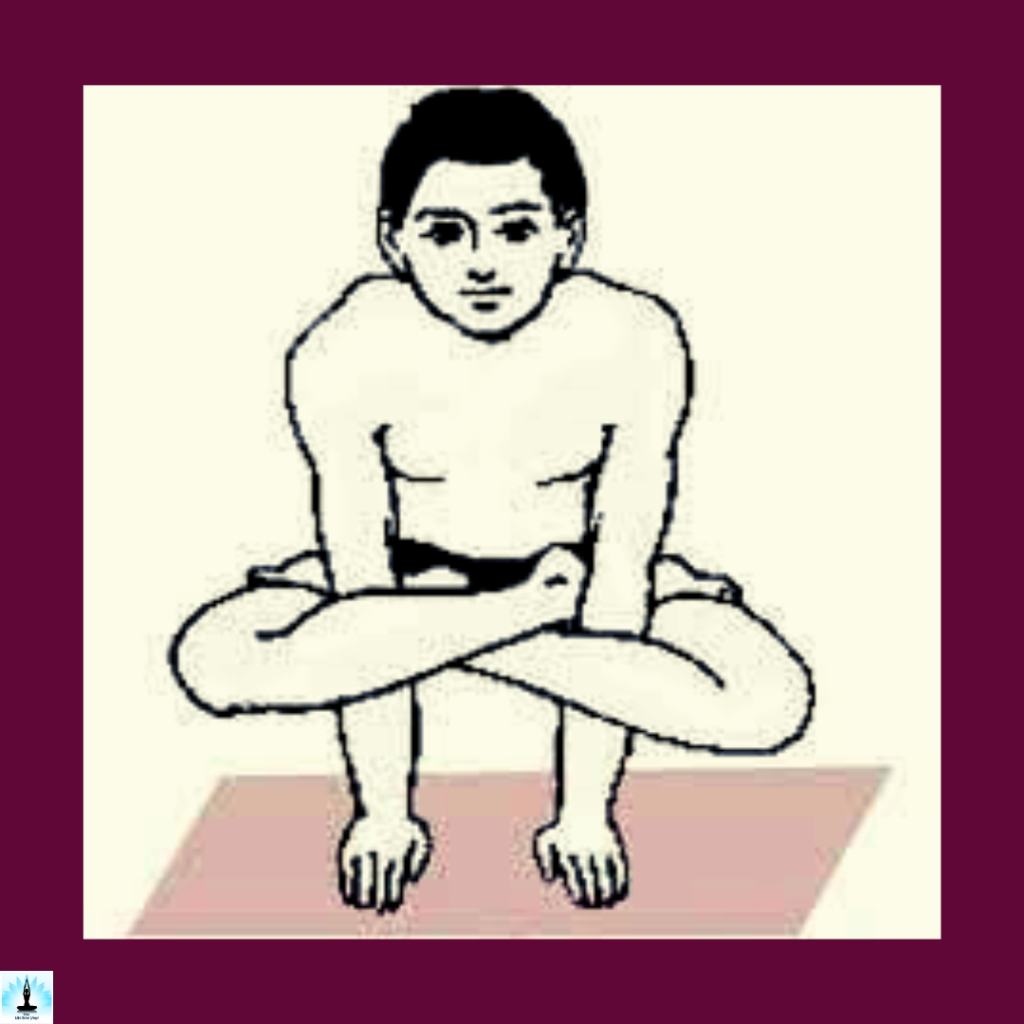
Follow these step-by-step instructions to practice Kukkutasana (Rooster Pose):
Starting Position:
Begin in a seated position with your legs extended in front of you.
Bend the Knees:
Bend your knees and bring them close to your chest.
Thread the Arms:
Slide your arms through the gap between your thighs and calves, bringing them to the outer sides of your legs.
Palms on the Floor:
Place your palms firmly on the floor, fingers pointing forward. Ensure your fingers are spread for stability.
Lift the Hips:
Engage your core muscles and lift your hips off the ground. Shift your weight onto your hands while keeping the feet off the floor.
Balancing on Hands:
Gradually straighten your legs, bringing them parallel to the floor. Balance on your hands, maintaining a strong core and engaged abdominal muscles.
Extend the Legs:
Slowly extend your legs forward until they are straight. Keep them at the same level as your hips.
Hold the Pose:
Hold Kukkutasana for a few breaths, maintaining steady breathing and focus.
Release and Lower:
To release the pose, bend your knees and lower your feet to the floor. Sit back down, extending your legs in front of you.
Rest in Sukhasana or Savasana:
After practicing Kukkutasana, take a moment to rest in a comfortable seated position like Sukhasana or lie down in Savasana to relax.
Advance Variations of Kukkutasana (Rooster Pose)
Parshva Kukkutasana (Side Rooster Pose):
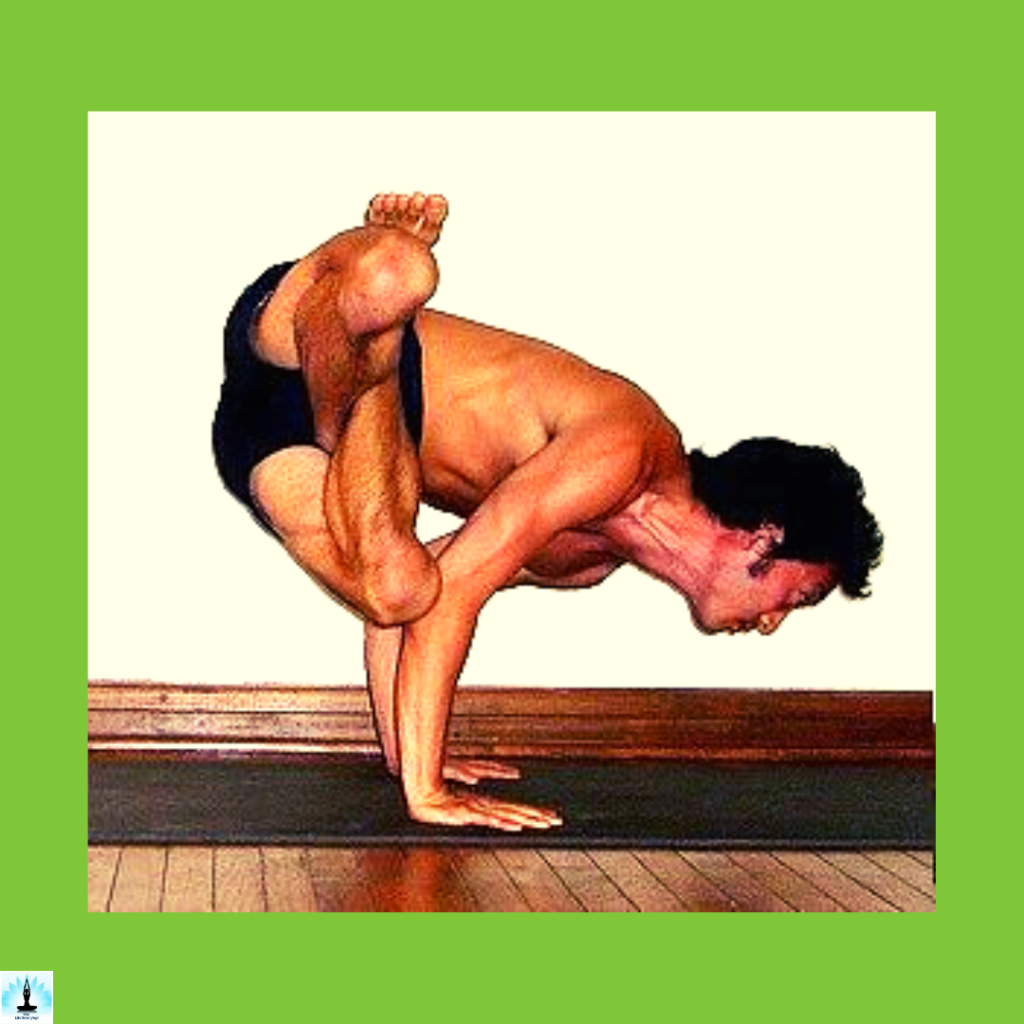
Parshva Kukkutasana involves a twist in the traditional Kukkutasana. While balancing on the hands, practitioners twist the torso to one side, extending one leg out to the side. This variation enhances spinal flexibility and challenges the practitioner’s ability to balance while in a twisted position.
Therapeutic Applications of Kukkutasana (Rooster Pose)
Kukkutasana, or Rooster Pose, have therapeutic benefits for individuals in search of strengthening the upper body, enhance core stability, and improve overall balance. The pose’s engagement of the arms, shoulders, and abdominal muscles can be therapeutic for those with mild back pain or discomfort, as it encourages the development of a strong and resilient back.
Poses Related to Kukkutasana (Rooster Pose)
Preparatory Poses of Kukkutasana
Malasana (Garland Pose):
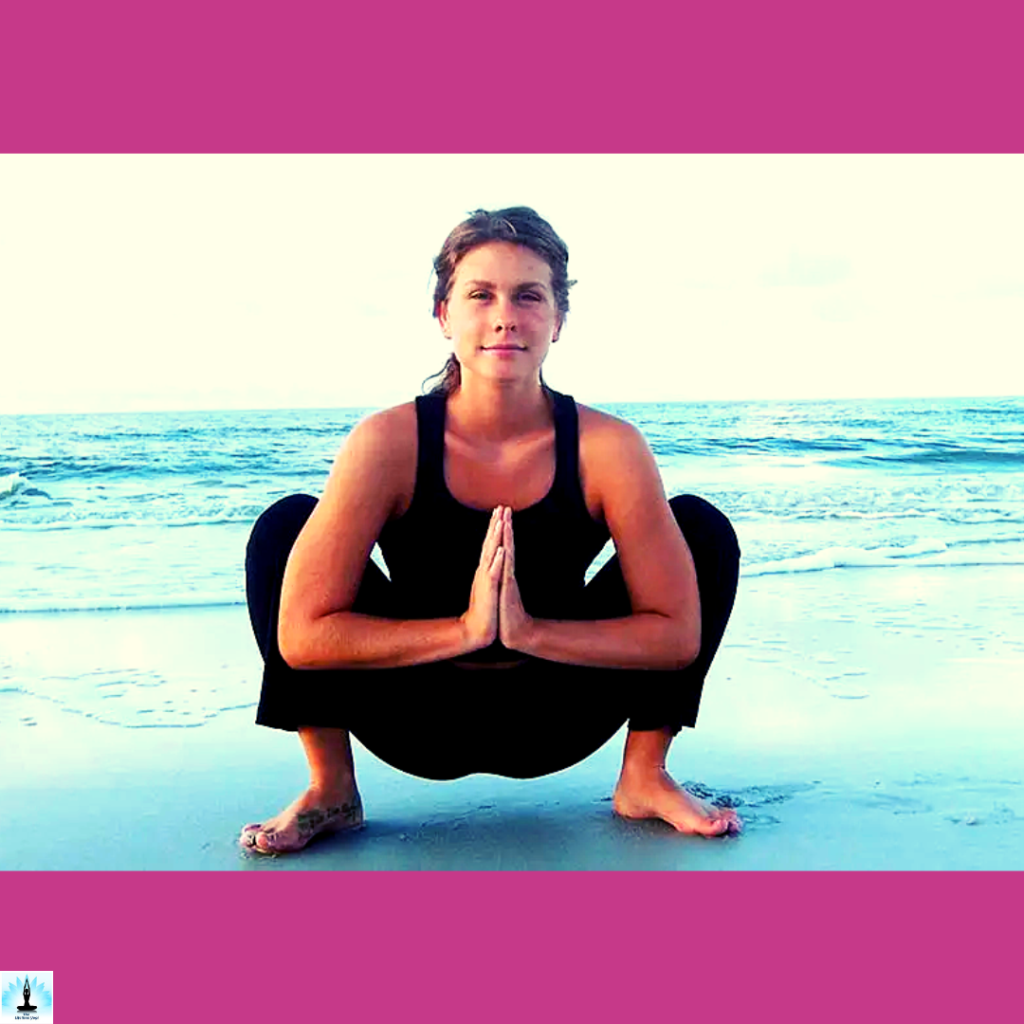
Malasana is an excellent preparatory pose for Kukkutasana as it opens the hips and groins. The deep squatting position in Malasana helps to warm up and increase flexibility in the lower body, providing a beneficial foundation for the leg movements in Kukkutasana.
Bakasana (Crow Pose):
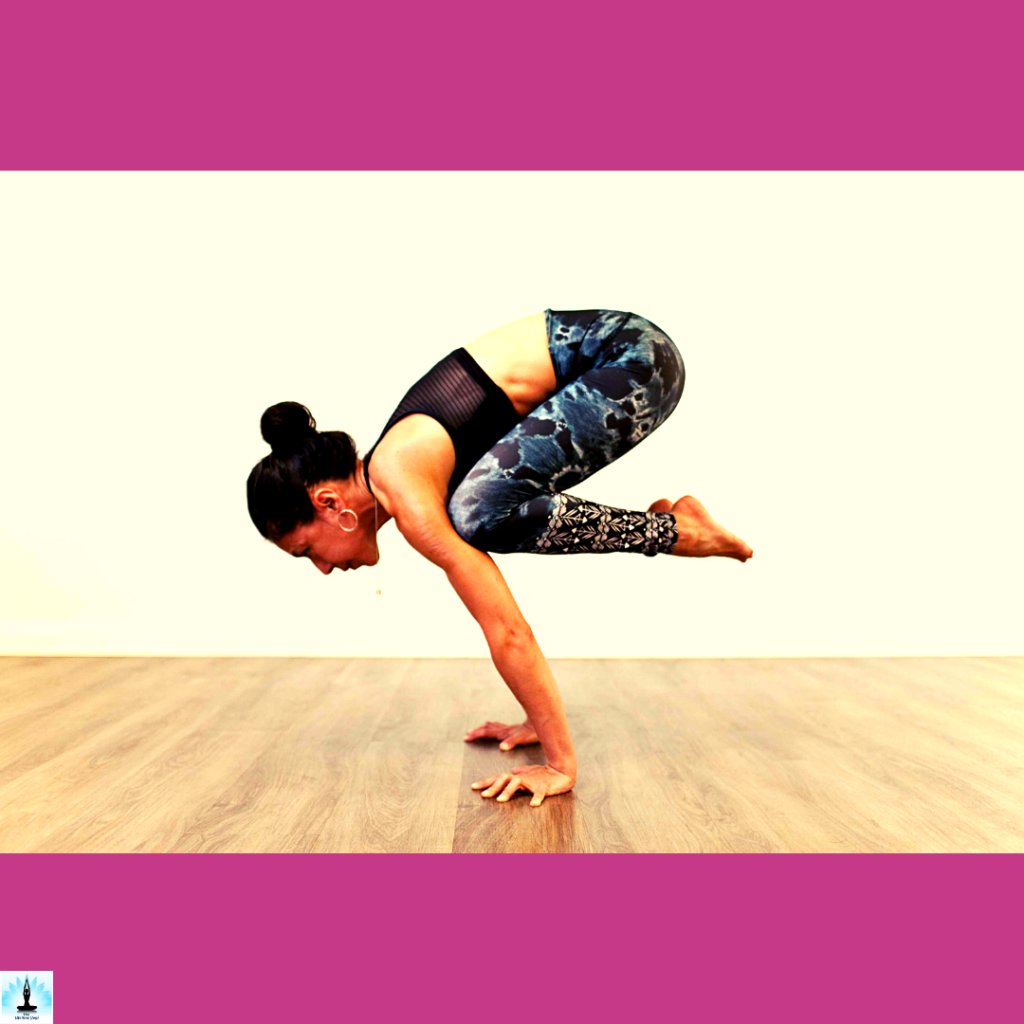
Bakasana, or Crow Pose, serves as a helpful precursor to Kukkutasana as it also involves balancing on the hands. Practicing Crow Pose enhances arm strength and the sense of balance needed for Kukkutasana. The engagement of the core in Bakasana is beneficial for the abdominal strength required in Kukkutasana.
Follow-up Poses of Kukkutasana
Tittibhasana (Firefly Pose):

After practicing Kukkutasana, transitioning into Tittibhasana, or Firefly Pose, can be a rewarding sequence. Firefly Pose builds on the arm balance foundation and challenges the practitioner to extend the legs outward, further enhancing strength and flexibility in the arms and core.
Padmasana (Lotus Pose):
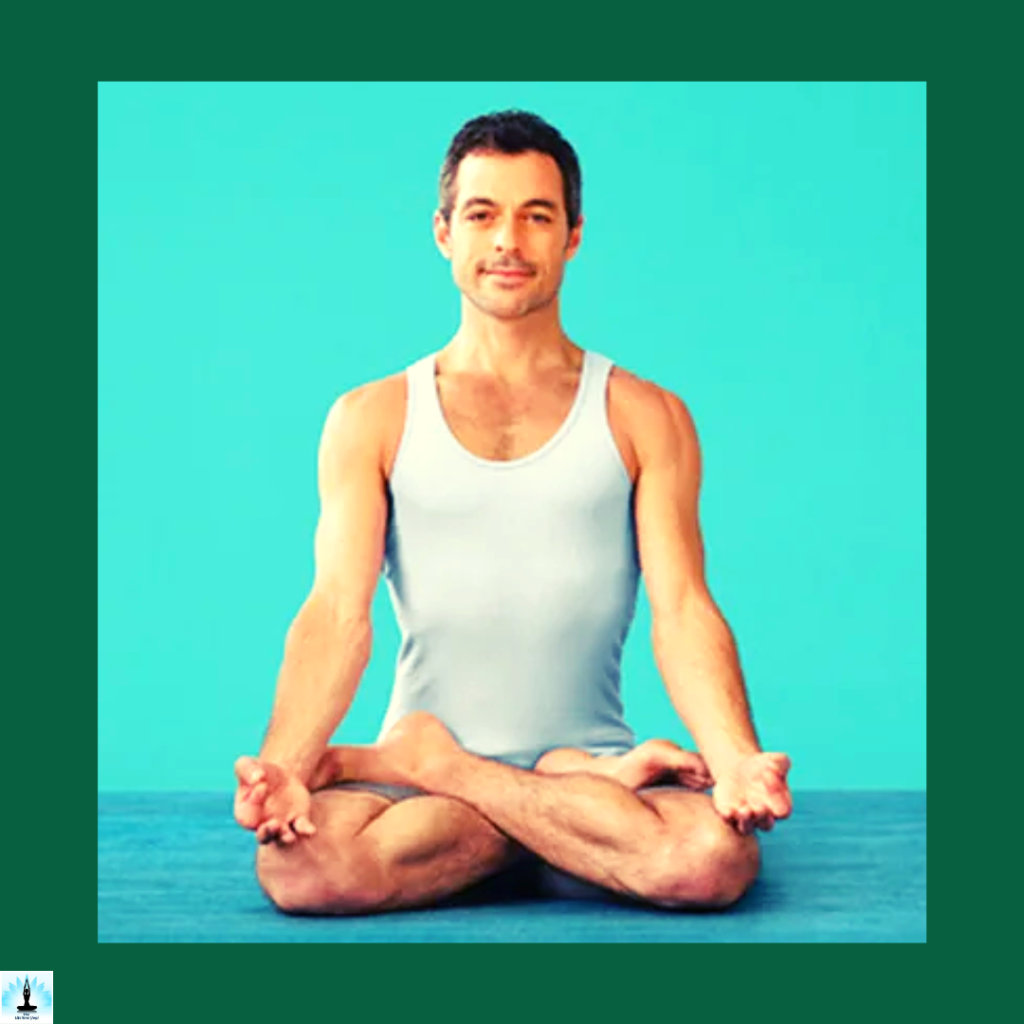
Padmasana is a grounding and centering pose that can be a beneficial follow-up to Kukkutasana. After the dynamic arm balance, sitting in Lotus Pose allows for a calming transition, promoting hip flexibility and inner focus. It serves as a posture to balance the intensity of Kukkutasana with a more meditative and relaxed state.
Beginner’s Tip of Kukkutasana (Rooster Pose)
For beginners attempting Kukkutasana, it is advisable to start gradually and prioritize proper alignment over depth. Begin by practicing the foundational elements of the pose, such as threading the arms through the legs and lifting the hips off the ground, without fully extending the legs. Focus on building strength in the arms, wrists, and core muscles. Utilize props like blocks or cushions under the hands for additional support.
Contraindications and Cautions of Kukkutasana (Rooster Pose)
- Individuals with wrist, arm, or shoulder injuries should exercise caution, and modifications may be necessary.
- Those with a history of high blood pressure or heart issues should avoid or modify the pose due to the intense engagement required.
- Kukkutasana involves compression in the abdominal region, making it unsuitable for individuals with digestive disorders, hernias, or recent abdominal surgery.
- Pregnant women should avoid Kukkutasana, especially as the abdomen is compressed.
- Individuals with knee or hip issues should also approach the pose cautiously, modifying as needed to prevent strain on the joints.
FAQ’s on Kukkutasana (Rooster Pose)
Q: What Is Kukkutasana?
A: Kukkutasana, or Rooster Pose, is a yoga asana where practitioners balance on their hands with their legs extended. The pose requires arm strength, core engagement, and flexibility.
Q: Is Kukkutasana Suitable for Beginners?
A: Kukkutasana is an advanced pose, and beginners may find it challenging. It’s advisable to build strength with foundational poses and seek guidance from a qualified yoga instructor before attempting Kukkutasana.
Q: What Muscles Does Kukkutasana Work?
A: Kukkutasana engages the muscles in the arms, shoulders, core, and hip flexors. The pose strengthens the upper body and promotes balance and stability.
Q: How Can I Improve My Balance in Kukkutasana?
A: Focus on building core strength through exercises like planks. Practice balancing poses like Tree Pose and work on wrist and arm strength with exercises like Downward-Facing Dog.
Q: Can Kukkutasana Help with Back Pain?
A: While Kukkutasana strengthens the back and core muscles, individuals with back pain should approach the pose cautiously and consider modifications. Consulting with a healthcare professional or yoga instructor is recommended.
Q: Are There Modifications for Kukkutasana?
A: Yes, practitioners can modify Kukkutasana by using props like blocks for hand support, bending the knees, or focusing on lifting the hips off the ground without fully extending the legs.
Q: How Long Should I Hold Kukkutasana?
A: The duration depends on individual strength and comfort. Beginners may start with shorter holds, gradually increasing as they build strength and confidence. Listening to the body is essential.
Q: Can Kukkutasana Be Practiced During Pregnancy?
A: Pregnant women should avoid Kukkutasana, especially as it involves compression in the abdominal region. Modifying poses and consulting with a healthcare professional is crucial during pregnancy.
Q: What Is the Significance of Kukkutasana in Yoga Philosophy?
A: Kukkutasana symbolizes balance, strength, and concentration. In yoga philosophy, it represents the interconnectedness of physical and mental aspects, encouraging practitioners to cultivate resilience and focus in the face of challenges.
Q: Can Kukkutasana Be Part of a Regular Yoga Practice?
A: Yes, with proper preparation and guidance, Kukkutasana can be part of a regular yoga practice. It’s important to approach the pose mindfully, gradually progressing and ensuring proper alignment to avoid injury.
Conclusion
The pose inspires practitioners to explore the interrelation of strength and focus, indicating the dynamic balance required in facing life’s challenges. Individuals need to approach the pose with respect and awareness of their own limitations. Whether as part of a regular yoga practice or a goal within a progression, the journey of mastering Kukkutasana highlights the transformative potential found in the integration of strength and balance on the yogic path.
References
- Pranavananda, Yogi (1997). Pure Yoga. Motilal Banarsidass. p. 64. ISBN 978-81-208-1508-7.
- Maehle, Gregor (2007). Ashtanga Yoga: Practice and Philosophy. New World Library. p. 98. ISBN 978-1-57731-606-0.
- Sharma, S. K.; Singh, Balmukand (1998). Yoga: a guide to healthy living. Barnes & Noble. p. 31. ISBN 978-0-7607-1250-4.
- Goel, Satish. Sex For All. Diamond Pocket Books. p. 69. ISBN 978-81-7182-029-0.
- Sjoman, Norman E. (1999) [1996]. The Yoga Tradition of the Mysore Palace. Abhinav Publications. p. 96. ISBN 81-7017-389-2.[permanent dead link]
- Iyengar 1979, pp. 134–135.
- Sinha, S. C. (1996). Dictionary of Philosophy. Anmol Publications. p. 18. ISBN 978-81-7041-293-9.
